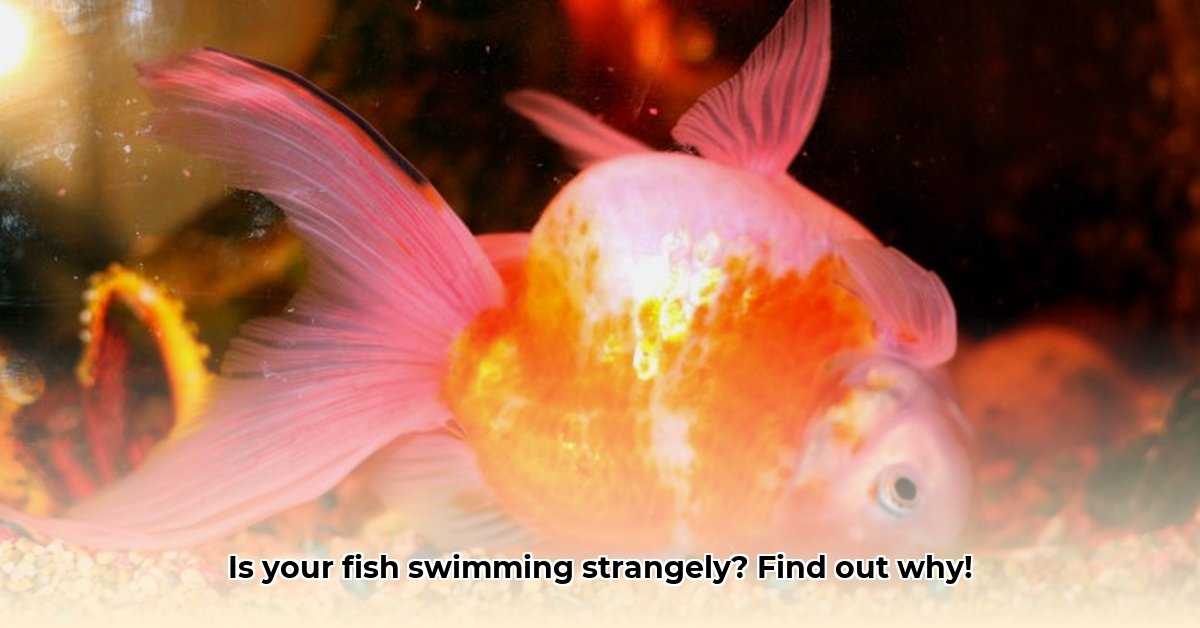
Is your fish struggling to maintain its position in the water column? Does it constantly float at the surface, sink to the bottom, or swim at an odd angle? These could be signs of a swim bladder disorder, a common but often treatable problem in aquarium fish. This guide will provide you with the knowledge and steps to effectively diagnose and treat swim bladder issues in your aquatic pets. For more information on swim bladder issues, check out this helpful resource: Gas Bladder Information.
Understanding the Swim Bladder
The swim bladder is a gas-filled organ that helps your fish control its buoyancy. Think of it as your fish's internal life vest, allowing it to effortlessly maintain its desired depth without constantly fighting the water's currents. When this delicate system malfunctions, swim bladder disorders occur.
Recognizing the Symptoms
Several warning signs can indicate a swim bladder problem. Observe your fish carefully for these symptoms:
- Constant surface dwelling: The fish continuously struggles to swim down.
- Persistent bottom dwelling: The fish remains at the bottom of the tank, unable to ascend.
- Tilted swimming: The fish swims at an uneven, tilted angle.
- Bloated abdomen: The fish's belly appears unusually swollen.
- Reduced appetite: A noticeable decrease in food consumption.
- Lethargy: The fish shows decreased activity levels and general listlessness.
Diagnosing the Problem
While the above symptoms strongly suggest a swim bladder issue, further investigation is necessary for accurate diagnosis. Carefully observe your fish's behavior and its environment. Has there been a recent change in diet, tank mates, or water parameters? Is there any visible injury or sign of infection?
For a comprehensive diagnosis, consult a veterinarian specializing in aquatic animals. An X-ray can reveal structural issues, blockages, or other problems within the swim bladder that might not be apparent visually. This is particularly helpful when the underlying cause remains unclear. Early diagnosis improves treatment success rates.
Common Causes of Swim Bladder Disorders
Several factors can contribute to swim bladder problems:
- Dietary issues: Ingesting too much air while eating (especially common in goldfish) or nutritional deficiencies.
- Infections: Bacterial or parasitic infections targeting the swim bladder.
- Physical trauma: Injuries from sharp objects or aggression from tank mates.
- Digestive problems: Constipation can place pressure on the swim bladder.
- Congenital defects: In some cases, fish are born with swim bladder malformations.
Treating Swim Bladder Problems: A Step-by-Step Guide
Treatment strategies directly depend on the underlying cause. However, the following steps offer a general approach:
1. Dietary Adjustments:
- Short fast: A 1-2 day fast (monitor closely; discontinue if the condition worsens) can help alleviate digestive issues.
- Sinking foods: For physostome fish (those with an open connection between their esophagus and swim bladder, such as goldfish), sinking foods prevent air ingestion.
- Nutritional enhancement: A balanced diet rich in essential nutrients supports overall health, including swim bladder function. A vet can recommend a specialized diet.
2. Water Quality Management:
- Regular water changes: Maintain pristine water conditions. Aim for 25% weekly water changes.
- Efficient filtration: Use a high-quality filter to remove waste and maintain water clarity.
- Temperature stability: Maintain the ideal temperature range for your fish species consistently.
3. Medication (Veterinary Supervision Only):
- Antibiotics/antiparasitics: If an infection is suspected, seek veterinary advice for appropriate medication and dosage. Never self-medicate your fish.
4. Veterinary Consultation:
- Imaging: X-rays help in confirming the diagnosis and identifying potential underlying conditions.
- Specialized treatments: A fish vet can provide personalized treatments, including surgery in rare cases, or specialized medications tailored to the specific diagnosis.
Prevention: Proactive Measures for Healthy Fish
Preventing swim bladder problems is significantly easier than treating them. These steps are crucial:
- Impeccable water quality: Regular testing and water changes are paramount.
- Balanced diet: Provide a species-appropriate, balanced diet; avoid overfeeding.
- Compatible tank mates: Choose tank mates that are not aggressive towards each other; avoid overcrowding.
- Stress-free environment: A well-maintained aquarium minimizes stress, promoting optimal fish health.
By following these preventative measures and seeking professional veterinary care when needed, you can significantly reduce the risk of swim bladder disorders and ensure the well-being of your aquatic companions. Remember, early intervention is key to successful treatment.